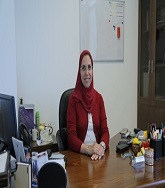
Gláucio Diré Feliciano
Research Professor
Foundation State University Center of the West Zone
Brazil
Biography
Dr. Gláucio Diré Feliciano Research Professor of the Foundation State University Center of the West Zone (UEZO), Rio de Janeiro, Brazil/Laboratory of Chemical and Biological Analysis (LAQB) , and responsible for the research line entitled Study of the biological effects of natural products with research interest for the development of new herbal medicines by the unique health system of Brazil (ReniSuS). He holds a degree in Biological Sciences from the Federal Rural University of Rio de Janeiro (UFRRJ), a master's degree in Human and Experimental Biology (Morphological Sciences) from the University of Rio de Janeiro (UERJ) and a PhD in Biology (area of concentration in Nuclear Biosciences) by the University of the State of Rio de Janeiro (UERJ). He concluded his postdoctoral fellowship in Experimental Pathology at the State University of Rio de Janeiro (UERJ). He is currently a research professor in the area of Neuropharmacology and Neurochemistry at the Foundation University State University of the West Zone (UEZO), where he is responsible for the research line entitled "Study of the biological effects of natural products with investigative interest in Brazil's unique health system. ", which is developed in the Laboratory of Chemical and Biological Analysis (LAQB). He is also a Full Professor II at Estácio de Sá University (UNESA). He is a Fellow of the American Association for Science and Technology.
Research Interest
Chemical and Biological Analysis
Biography
Dr. Abdulmohsen H. Alrohaimi has earned his doctorate degree from Tufts University Boston USA in the area of Pharmacogenetics. Back in Saudi Arabia, he joined Saudi Food and Drug Authority (SFDA) as an executive director and established the infrastructure for clinical trial in the kingdom. He contributed to SFDA all his skill and expertise and initiated many educational awareness programs for the community development. Currently he is holding position of dean in the School of Pharmacy Shaqra University. He chairs more than ten scientific and research committees. He has to his credit two books and a good number of research papers in various highly index journals. He has presented many of his research works in several national and international conferences in Saudi Arabia and abroad. His area of interest is Clinical trial, Pharmacovigilance, Pharmacogenetics Biotechnology and Stem cell techniques.
Research Interest
Clinical trial, Pharmacovigilance, Pharmacogenetics Biotechnology and Stem cell techniques.

Alexander Seifalian
CEO and Professor Nanotechnology & Regenerative Medicine
The London BioScience Innovation Centre
United Kingdom
Biography
Alexander Seifalian, Professor of Nanotechnology and Regenerative Medicine worked at the Royal Free Hospital and University College London for over 26 years, during this time he spent a year at Harvard Medical School looking at caused of cardiovascular diseases and a year at Johns Hopkins Medical School looking at the treatment of liver. He published more than 647 peer-reviewed research papers and registered 14 UK and International patents. On editorial boards of 41 journals. He is currently CEO of NanoRegMed Ltd, working on the commercialisation of his research. During his career, Prof Seifalian has led and managed many large projects with successful outcomes in terms of commercialisation and translation to patients. In 2007 he was awarded the top prize in the field for the development of nanomaterials and technologies for cardiovascular implants by Medical Future Innovation, and in 2009 he received a Business Innovation Award from UK Trade & Investment (UKTI). He was the European Life Science Awards’ Winner of Most Innovative New Product 2012 for the “synthetic tracheaâ€. Prof Seifalian won the Nanosmat Prize in 2013 and in 2016 he received the Distinguish Research Award in recognition of his outstanding work in regenerative medicine from Heals Healthy Life Extension Society. His achievements include the development of the world first synthetic trachea, lacrimal drainage conduit, and vascular bypass graft using nanocomposite materials, bioactive molecules and stem cell technology. He has over 15,000 media report from his achievement; include BBC, ITV, WSJ, CNN, and many more. Currently, he is working on the development and commercialisation of human organs using graphene-based nanocomposite materials and stem cells technology. He has commercialised a novel functionalised graphene oxide for medical and other industrial applications. He also commercialised new biodegradable nanocomposite materials for medical and other industrial applications. He is British citizen and completed his school in UK (concord college) and his scientific training at London University.
Research Interest
Nanotechnology and Nanomaterials




